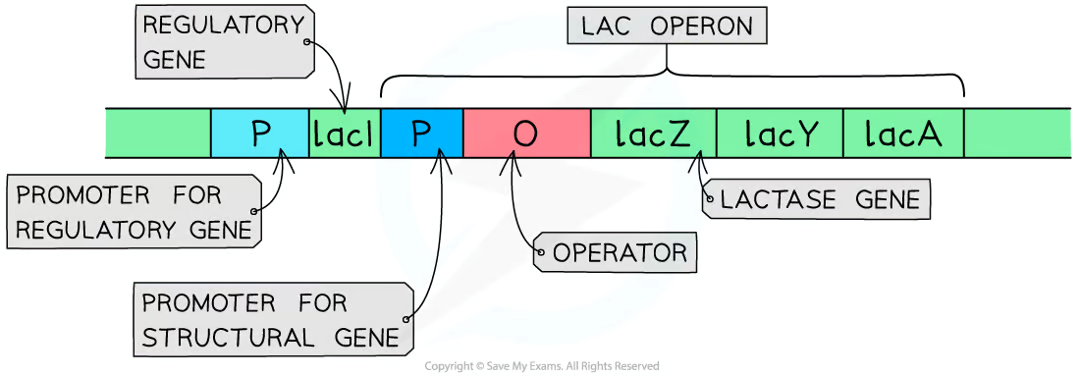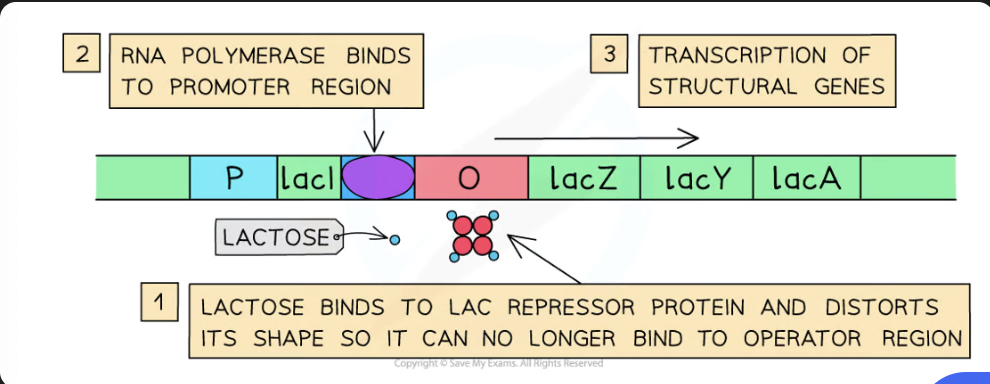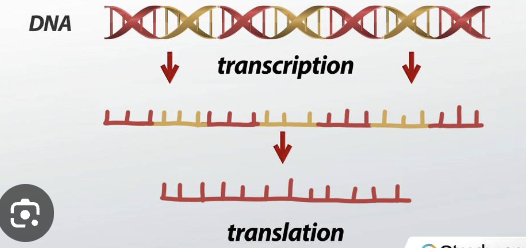Genetics and evolution
1/19
There's no tags or description
Looks like no tags are added yet.
Name | Mastery | Learn | Test | Matching | Spaced |
|---|
No study sessions yet.
20 Terms
what is a gene mutation
a change in the sequence of base pairs in a DNA molecule that may result in an altered polypeptide
why do mutations occur
Insertion of one or more nucleotides
Deletion of one or more nucleotides
Substitution of one or more nucleotides
what increases the probability of a mutation
Ionising radiation such as X-rays
Deaminating chemicals
Methyl or ethyl groups can be added to bases
Viruses can insert sections of viral DNA into the DNA of cells
types of substitution mutations
Silent mutations – the mutation does not alter the amino acid sequence
Missense mutations – the mutation alters a single amino acid
Nonsense mutations – the mutation creates a premature stop codon
what are beneficial mutations
In some cases, this alteration to a polypeptide may actually result in an altered characteristic in an organism that causes beneficial effects for the organism
e.g melanin production
what are chromosome mutations?
mutations affect whole chromosome
deletion -section of chromosome breaks off, lost within the cell
duplication - section of chromosome is duplicated
translocation - section breaks off and joins another
inversion - section breaks off and then joins back
what are the three levels of regulatory mechanisms
Regulation at the transcriptional level (i.e. regulatory mechanisms that occur during transcription)
Regulation at the post-transcriptional level (i.e. regulatory mechanisms that occur after transcription)
Regulation at the post-translational level (i.e. regulatory mechanisms that occur after translation)
name the two types of genes
A structural gene codes for a protein that has a function within a cell (e.g. enzymes, membrane carriers, hormones etc.)
For example, the F8 gene codes for the protein Factor VIII involved in blood clotting
Regulatory genes code for proteins (or various forms of RNA) that control the expression of structural genes
describe the structure and function of the lac operon
the lac operon controls lactase production
contains:
Promoter for structural genes
Operator
Located to the left (upstream):
Promoter for regulatory gene
Regulatory gene lacI that codes for the lac repressor protein

what happens to the lac operon when lactose is and isn’t absent?
absent:
The regulatory gene is transcribed
The lac repressor protein binds to the operator region
Due to the presence of the repressor protein RNA polymerase is unable to bind to the promoter region
Transcription of the structural genes does not take place
No lactase enzyme is synthesized
present:
There is an uptake of lactose by the bacterium
The lactose binds to the second binding site on the repressor protein, distorting its shape so that it cannot bind to the operator site
RNA polymerase is then able to bind to the promoter region and transcription takes place
The mRNA from all three structural genes is translated
Enzyme lactase is produced and lactose can be broken down and used for energy by the bacterium

regulatory mechanisms at the post transcriptional level
the editing of primary mRNA
When transcription of a gene occurs, both the exons and introns are transcribed
This means the messenger RNA (mRNA) molecule formed also contains exons and introns
As the introns are not translated, they are removed
The exons are then all fused together to form a continuous mRNA molecule called mature mRNA that is ready to be translated
This process is sometimes called ‘splicing’ and is part of the process of post-transcriptional modification

introns vs exons
The coding sequences are called exons and
The non-coding sequences are called introns
regulatory mechanisms at the post translational level
After translation, polypeptides undergo modifications in the Golgi apparatus
addition of non- protein groups
formation of disulphide bridges
modification by cAMP - activates protein kinases. which catalyse the addition of phosphate groups to proteins
what are transcription factors?
bind to specific regions of DNA to control the transcription of genes
bind to the promoter region of a gene, increase or decrease rate of transcription
what is a homeobox gene?
Homeobox genes are responsible for the genetic control of the development of body plans in different organisms
they control the polarity of the organism
segmentation of organisms such as insects and mammals into distinct body parts
DNA sequence that codes for a protein transcription factor
The transcription factors attach to DNA at specific locations and regulate the transcription of genes
Homeobox gene sequences are highly conserved
what are hox genes
subset of homeobox genes
determine the identity of embryonic body regions along the anterior-posterior axis (i.e. the head-tail axis)
organised into Hox clusters
Vertebrates have four Hox clusters (each containing 9-11 Hox genes), which are found on different chromosomes
There is a linear order to the Hox genes is directly related to the order of the regions of the body that they affect

what is mitosis and apoptosis
Mitosis is the type of cell division that produces identical new cells for processes such as growth, cell replacement and tissue repair
Apoptosis is programmed cell death (sometimes referred to as natural cell death)
how does apoptosis work?
The DNA of the cell becoming denser and more tightly packed
The nuclear envelope of the cell's nucleus breaking down and chromatin condensing
Vesicles forming that contain hydrolytic enzymes
Phagocytes engulfing and digesting the cell via phagocytosis
why is mitosis and apoptosis important?
key mechanisms controlling the development of body form
some cells that are produced earlier on in development may no longer be needed
As a result, these cells are destroyed (by apoptosis) as part of the development of the organism
For example, structures like fingers and toes first develop as a single combined unit and are then separated later via programmed cell death (apoptosis) of the cells in between the digits
what factors affect the expression of regulatory genes?
change in temperature or light intensity
psychological stress
drugs